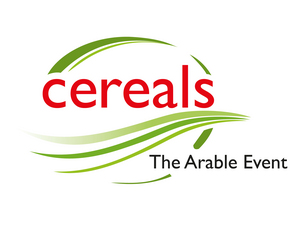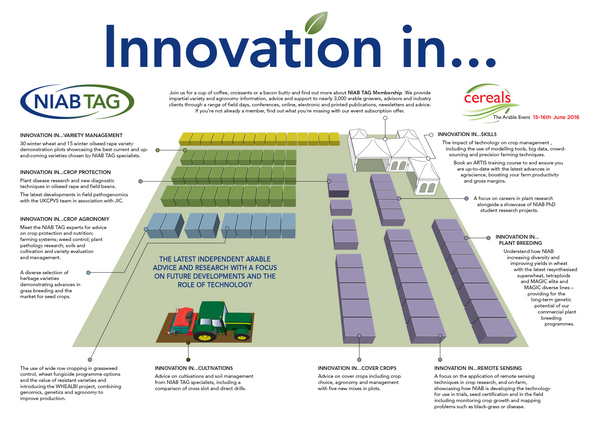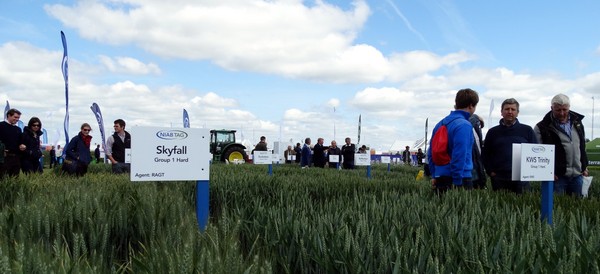- About
-
Research
- Agronomy and farming systems
-
Agricultural crop research
-
Research projects - agriculture
- About SASSA-SAI
- BioBoost
- Biomass Connect
- CTP for Sustainable Agricultural Innovation
- Climate Ready Beans - workshop presentations (March 2022)
- Crop diversity HPC cluster
- Designing Future Wheat
- Final project workshop
- Get involved
- List of materials
- News and updates
- Partners
- Rustwatch
- The Sentinel Crop Disease Surveillance Network
- The research team
- UK Cereal Pathogen Virulence Survey
- UK wheat varieties pedigree
- Weed management - IWM Praise
- Crop breeding
- Crop characterisation
- Data sciences
- Genetics and pre-breeding
- Plant biotechnology
- Plant pathology and entomology
- Resources
-
Research projects - agriculture
-
Horticultural crop research
-
Research projects - horticulture
- Augmented Berry Vision
- BEESPOKE
- Boosting brassica nutrition in smart growing systems
- CTP for Fruit Crop Research
- Develop user-friendly nutrient demand models
- Egg laying deterrents for spotted wing drosophila
- Enhancing the nutritional quality of tomatoes
- Improving berry harvest forecasts and productivity
- Improving vineyard soil health through groundcover management
- Intelligent growing systems
- Knowledge transfer for sustainable water use
- POME: Precision Orchard Management for Environment
- RASCAL
- STOP-SPOT
- UV-Robot
- Crop science and production systems
- Genetics, genomics and breeding
- Pest and pathogen ecology
- Field vegetables and salad crops
- Plum Demonstration Centre
- The WET Centre
- Viticulture and Oenology
-
Research projects - horticulture
- Crop Science Centre
-
Services
- Analytical Services
- Business Development
- Commercial trial services
- Membership
- Plant breeding
- Plant characterisation
- Seed certification
-
Training
-
Technical agronomy training
- Advanced crop management of bulb onions
- Advanced crop management of vegetable brassicas
- Advanced nutrient management for combinable crops
- Benefits of cover crops in arable systems
- Best practice agronomy for cereals and oilseed rape
- Developing a Successful Strategy for Spring Crops
- Disease Management and Control in Cereal Crops
- Incorporating SFI options into your rotation
- Protected Environment Horticulture – Best Practice
- Techniques for better pest management in combinable crops
- Crop inspector and seed certification
- Licensed seed sampling
-
Technical agronomy training
- News & Views
- Events
-
Knowledge Hub
- Alternative and break crops
-
Crop genetics
- POSTER: Diversity enriched wheat (2025)
- POSTER: Genetics of wheat flag leaf size (2024)
- POSTER: Wheat yield stability (2024)
- Poster: Traits for future cereal crops (2022)
- POSTER: wild wheat fragment lines (2022)
- POSTER: Improving phenotyping in crop research (2022)
- PRESENTATION: Plant breeding for regen ag
- Poster: Designing Future Wheat (2020)
- Crop nutrition
-
Crop protection
- POSTER: Understanding the hierarchy of black-grass control (2025)
- POSTER: Emerging weed threats (2025)
- POSTER: Disease control in barley (2025)
- Poster: Weed seed predation in regen-ag (2024)
- POSTER: Disease control in winter wheat (2025)
- POSTER: Mode of action (2023)
- POSTER: Inter-row cultivation for black-grass control (2022)
- POSTER: UKCPVS winter wheat yellow rust in spring 2025 (2025)
- Poster: Management of Italian ryegrass (2021)
- POSTER: UKCPVS winter wheat rusts - 2024/25 review (2025)
- POSTER: UKCPVS disease monitoring and the benefit to UK growers (2025)
- POSTER: Diagnosing and scoring crop disease using AI (2025)
- POSTER: Finding new sources of Septoria resistance (2024)
- POSTER: Fungicide resistance research (2024)
- POSTER: Detecting air-borne pathogens (2024)
- POSTER: Oilseed rape diseases (2024)
- POSTER: Fungicide resistance research (2024)
- POSTER: Improving chocolate spot resistance (2022)
- Poster: Pathogen diagnostics (2022)
- Fruit
- Regen-ag & sustainability
-
Seed certification
- POSTER: Wheat DUS (2024)
- POSTER: Innovation in variety testing (2024)
- POSTER: AI and molecular markers for soft fruit (2024)
- POSTER: Barley crop identification (2023)
- POSTER: Herbage grass crop identification (2023)
- POSTER: Herbage legume crop identification (2024)
- POSTER: Minor cereal crop inspecting (2023)
- POSTER: Pulse crop identification (2023)
- POSTER: Wheat crop identification (2023)
-
Soils and farming systems
- POSTER: Checking soil health - across space and time (2024)
- POSTER: Checking soil health - step by step (2024)
- POSTERS: Changing soil management practices (2022)
- Poster: Monitoring natural enemies & pollinators (2021)
- POSTER: Soil structure and organic matter (2024)
- POSTER: Novel wheat genotypes for regen-ag (2024)
- Video: New Farming Systems project (2021)
- Video: Saxmundham Experimental Site (2021)
- POSTER: Impact of prolonged rainfall on soil structure (2024)
- POSTER: Soil & agronomic monitoring study (2024)
- POSTER: The impact of rotations & cultivations (2024)
- VIDEO: Great Soils; soil sampling guidelines (2020)
- Poster: Soil invertebrates within arable rotations (2024)
- VIDEO: Soil health assessment (2021)
- POSTER: Saxmundham - modern P management learnings
- POSTER: Saxmundham - 125 years of phosphorus management
- Poster: Soil phosphorus - availability, uptake and management (2025)
- POSTER: Morley long term experiments (2025)
- POSTER: Exploiting novel wheat genotypes for regen-ag (2025)
- Video: Saxmundham Experimental Site (2021)
- Varieties
EVENT: Putting innovation into practice at Cereals
 NIAB TAG is providing a tick list of agricultural innovation for growers and agronomists to check out at this year’s Cereals Event in Cambridgeshire in June.
NIAB TAG is providing a tick list of agricultural innovation for growers and agronomists to check out at this year’s Cereals Event in Cambridgeshire in June.
Under the tagline ‘Innovation In…’ the impact of technology on crop management, including the use of modelling tools, remote sensing equipment, big data, crowd-sourcing and precision farming techniques, will feature on the NIAB TAG stand alongside the perennial favourites such as the winter wheat and winter oilseed rape variety demonstration plots.
The innovation theme continues with a look at the latest plant disease research with new diagnostic techniques in oilseed rape and field beans and the application of field pathogenomics in the detection of new races of yellow rust. And finally visitors can find out how NIAB’s genetics and breeding team is increasing diversity and improving yields in wheat with the latest resynthesised superwheat, tetraploids and MAGIC elite and MAGIC diverse lines - providing for the long-term genetic potential of the UK’s commercial plant breeding programmes.

NIAB Technical Director Bill Clark says “We often hear that the need for innovation in arable agriculture has never been greater, driven by the challenges of global food security, climate change and resource conservation. Yes, this is a vitally important time for crop innovation and there are some truly exciting scientific breakthroughs alongside new agronomic tools and technology being developed. But UK growers need to see these innovations in action, understand how they can and will be put into practice on farm and the economic and agronomic benefits in their use, all of which we will be showing on our stand at Cereals.”
Remote sensing
This includes a focus on the application of remote sensing techniques in crop research and on-farm. Against a backdrop of physically and visually different varieties NIAB will show how it is developing these technologies for use in research plot measurements, seed inspection and certification and in the field including monitoring crop growth and mapping problems such as black-grass or disease.
Researcher Dr Robert Jackson is looking for answers from growers. “Innovation works both ways. By showing how we use remote sensing, we hope to inspire visitors to tell us how they could use similar techniques in practice on their farms in ways that we may not have considered!”
Soils, rotations and cultivations
One favourite exhibit has moved this year. The success of the soil hole has meant it has been promoted to its own area 100 m along from the main stand. NIAB TAG’s Ron Stobart and NIAB CUF’s Dr Mark Stalham, working with Rothamsted Research soil scientists, will be demonstrating in a larger walk-through pit for visitors.
Ron Stobart says: “Our 8 m long, 4 m wide and 1.2m deep walk-through soil pit is a unique opportunity for visitors to check out the Cereals Event site soil profile at eye level and study the rooting of a range of cover crop and cereal crops.
“We are going to show how a well-structured soil can help water infiltration and aid moisture retention, demonstrate how to increase soil aeration for root growth and biological function and help growers improve the workability of their soil.” A subsoiler will also be pulled through the soil providing a backdrop to advice on cultivations and rotations.
Both stands will feature cover crop mixes, including plots of tillage radish, a mix of crimson clover, black medick and vetch as well as buckwheat and phacelia, alongside guidance to improve the effectiveness of cover cropping strategies and which rotations will benefit the most from cover crops.
“NIAB TAG research over the past decade has shown the benefits of cover crops include increased soil organic matter and soil biodiversity, protecting the soil surface from rainfall erosion, reducing nitrate leaching, improved soil structure and enhancing wildlife and the environment,” says Mr Stobart.
NIAB TAG at the 2016 Cereals Event - stand summary
NIAB TAG will be providing the latest independent arable advice and research with a focus on future developments and the role of technology, including:
- variety demonstration plots - 15 winter oilseed rape varieties with Simon Kightley advising on variety choice for oilseed rape, linseed, peas and beans, and Clare Leaman providing expert advice on winter wheat variety choice for 2016 with thirty established and new varieties. Simon and Clare will be supported on the variety demonstration plots by other NIAB TAG specialists and TAG-Consulting agronomists;
- advice on cover crops including crop choice, agronomy and management with five new mixes in plots;
- use of remote sensing techniques in crop research and on-farm;
- latest developments on yellow rust with the UKCPVS team;
- a diverse selection of herbage varieties demonstrating advances in grass breeding and the market for seed crops;
- use of wide-row cropping in grassweed control;
- wheat fungicide programme options and the value of resistant varieties;
- how wheat pre-breeding research is increasing diversity and improving yields, including superwheat, tetraploids and MAGIC wheat lines;
- impact of technology on crop management, including the use of modelling tools, big data, crowd-sourcing and precision farming techniques alongside how ARTIS training courses can ensure you are up-to-date with the latest advances;
- advice on soil management, rotations, cultivations and fertility building, including the new soil hole stand in association with Rothamsted Research; and
- NIAB TAG membership services including the latest crop production advice and farmer-led research, field days, agronomy trials results, unique regional variety information and weekly agronomy updates through the season.






